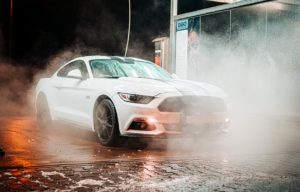
Shielding Your Vehicle’s Paint: 5 Essential Methods
Freshly manufactured cars and trucks exhibit a lustrous paint finish characterized by a rich sheen, devoid of imperfections or dullness. Every automaker applies a final layer of transparent paint, known as the “clear coat,” on top of the color layer. This clear coat is intended to uphold the finish and safeguard the visual appeal.
However, this doesn’t imply that the paint requires no care at all. Presented below are five uncomplicated measures that owners can adopt to ensure their vehicle retains its pristine appearance akin to when it was brand new, for years to come.
Opt for Shaded Parking
The ultraviolet (UV) rays emitted by the sun result in color deterioration, fading, and oxidation. Furthermore, the infrared heat from the sun intensifies the effects of other damaging elements. Without proper safeguards, the sun can typically deteriorate a vehicle’s finish in approximately five seasons. To avert this outcome, make a habit of parking your vehicle in shaded areas whenever possible. This could include a garage, parking structure, or beneath a substantial tree.
Utilize a Protective Car Cover
Consider purchasing a car cover if shade or indoor parking options are unavailable for your vehicle. For under $200, you can acquire a universal-fit car cover that provides effective protection against the sun’s damaging effects when your vehicle is parked.
Opt for a car cover that offers a balance between water resistance and breathability, allowing moisture to dissipate. Lighter hues tend to reflect the sun’s heat more effectively, while metallic covers are particularly advantageous in exceptionally hot climates.
Maintain Regular Vehicle Washing
Combatants like pollution, dust, chemicals, and more are present in the atmosphere and tend to settle on your vehicle’s paint, leading to surface damage. Bird droppings and bug residues are equally detrimental. Maintaining a regular vehicle washing routine, even if it’s a drive-through car wash, is essential to maintain a clean paint surface free from environmental deposits.
Start by using a hose to rinse off larger contaminants from the paint. Proceed with a gentle sponge bath using soapy water, followed by a thorough rinse. Always opt for “car wash” soap to prevent wax from being stripped off the paint (avoid using dish soap as it can cause harm). For drying, employ soft cotton towels or consider using microfiber cloths to achieve a streak-free drying process.
Regularly Apply Wax to the Paint
A protective layer of wax can be applied to paint finishes, effectively dispersing the sun’s ultraviolet rays and forming a shield against airborne pollutants. Furthermore, wax imparts a smooth and glossy texture, making vehicle washing and drying processes more effortless on waxed surfaces. Aim to wax the entire vehicle at least every six months and rely on detailing spray to address touch-ups between wax applications. When selecting a wax product (typically priced between $10-15 per bottle), opt for one that can be applied in sunlight, as it simplifies the application process.
Utilize Paint Protection Film (PPF)
Paint Protection Film (PPF) is a slim layer of thermoplastic urethane film that is applied atop the vehicle’s paint, akin to an additional transparent shield that doesn’t chip like a clear coat. PPF serves as a safeguard against stone chips, bug remnants, minor abrasions, and UV rays. Furthermore, top-tier PPF films boast self-healing attributes, which means slight imperfections tend to mend themselves over time. Notably, the finish of PPF nearly flawlessly aligns with the paint’s surface, rendering them virtually inconspicuous without a close examination. The sole drawback lies in the cost, as professionally installing PPF on the entire vehicle can incur expenses amounting to thousands of dollars.

